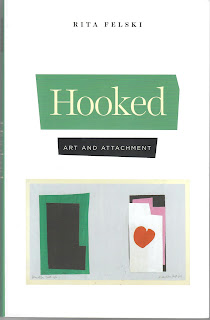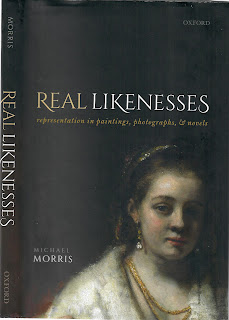I am one of those people
who would rather read a book about Jacques Derrida than read a book by Derrida.
This one, though very well-written and diligent, isn’t going to change my mind.
Derrida is just not my cup of tea - a phrase which the late Richard Wollheim
used at the end of a superb essay on the work of Jacques Lacan which had
involved him in a great deal of diligent reading. Nonetheless, I must have
picked up something and not so long ago cheerfully titled an essay “Social
Construction Deconstructed”. But then there is a generic use of “deconstruction”
which is almost certainly not faithful to an original idea. To use the term doesn’t make me
one of the (dwindling) band of the Derrida faithful.
When I arrived in Paris
for a year’s graduate work in the autumn of 1971 I promptly spent most of my
money on a pile of books by celebrity theorists of the time, intending to read
them all. I bought Derrida’s De la Grammatologie
and L’Ecriture et la Différence, both
published in 1967, and probably read half of each book - I don’t have the
physical books any more so I can’t be more precise. But the material seemed at a
distance from my more immediate concerns at the time and I didn’t finish them or do anything with them.
Nonetheless, I found my way to the Ecole Normale Superieure and sneaked into Derrida’s
(very sparsely attended) lectures in which he was offering a close reading of
Hegel on the family and marriage, and that was even less of concern to me. So I
stopped going. Salmon’s book (p. 166) tells me that those lectures were
the basis of his 1974 book Glas. It
was common practice in the Paris of the time for professors to use draft
chapters of next year’s book as their teaching material. I stuck with Foucault
for the whole year and he was working on his Pierre Rivière study and presented
work in progress in seminars. But his approach was different, and it was much
more of a teaching situation that he created, not least because he had dissuaded the tourists
from attending: at the Collège de France all teaching was supposed to be open
to anyone and Foucault devoted his first session grilling those present about
their motives for being there. The grilling was severe enough to reduce numbers
substantially at the second session. From Foucault, I got the idea of studying minor or parallel thinkers alongside major figures and a few years later writing about John Stuart Mill tried to show how part of his system of thought had been more fully fleshed out by the more or less forgotten Sir George Cornewall Lewis. Likewise, I sought to show how you could make sense of Rousseau's arguments in Du Contrat Social by putting them alongside Condorcet's work on probability theory and majority voting.
Later, in the 1980s when teaching at the University of Sussex one of my colleagues was Geoff Bennington
who has now devoted a lifetime’s talent to promoting Derrida’s work, initially by translation and then in many other ways including direct collaboration with Derrida. There was an occasion when I complained
that Derrida was an improvisatore and Bennington replied “I think he’s the bee’s knees”. I had put Derrida into the same category as Lacan, whose “seminars” (attended by hundreds at Saint
Anne) were theatre in the tradition of Anton Mesmer and, by this stage in his career, more or less unintelligible.
He entered each week wearing a fur coat; a female assistant helped him take
it off and held on to it for the duration. In stark contrast, I greatly enjoyed
the patient and relaxed seminars offered by Roland Barthes, who was my director
of studies.
I made one more attempt
to engage with Derrida’s work in 1997 at a Colloque held at Cérisy la Salle in Normandy devoted to Derrida and the topic
of L’Animal Autobiographique. Derrida
spoke at length, uninterrupted, and certainly for longer than Fidel Castro’s
record. I found it exasperating. Peter Salmon now tells me that Derrida “presented
a ten hour lecture” (p 273). It certainly felt like it.
Unless you are very stupid, then if you spend your life writing eighty books (Salmon’s figure for Derrida) then you are more or less bound to say something interesting somewhere. But I’m happy to leave it to others to discover where.






